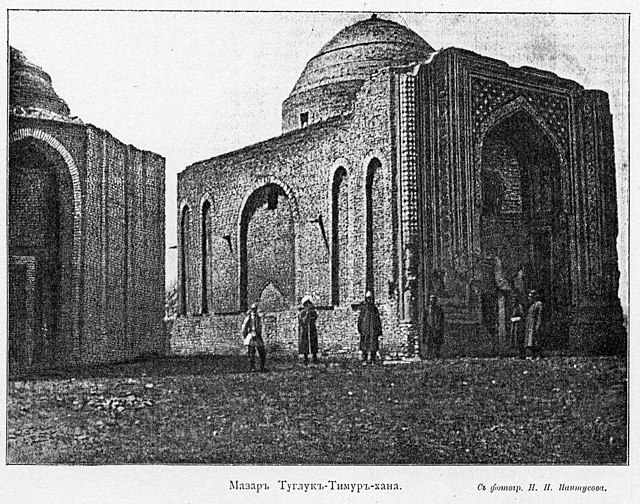Top Qs
Timeline
Chat
Perspective
Huocheng County
County in Xinjiang, China From Wikipedia, the free encyclopedia
Remove ads
Huocheng County (Chinese: 霍城县; pinyin: Huòchéng xiàn), as the official romanized name, is also transliterated from Uyghur as Korgas County (Uyghur: قورغاس ناھىيىسى; in Kazakh: قورعاس اۋدانى; Chinese: 霍尔果斯县). It is situated within the Xinjiang Uyghur Autonomous Region and falls under the administration of the Ili Kazakh Autonomous Prefecture. The county is located between Yining and the border city of Khorgas, covering an area of 5,466 km2 (2,110 sq mi), with a population of 360,000 (2004 estimate). There are twenty-nine ethnic groups residing in the county, including the Han and Uyghur nationalities.
To the north of Huocheng County is Wenquan County, while the Ili River lies to the south. Its Western side is bordered by Khorgas City, and Yining is located approximately 45 km (28 mi) to the east.
Remove ads
History
Within Huocheng County, lies the significant ruined site of ancient Almaliq. Additionally, the mausoleum of the first khan of Moghulistan, Tughlugh Timur, is also located within the county.
During the 1760s, nine fortresses were constructed in the Ili River Basin, and four of them were situated within the modern Huocheng County. Huiyuan served as the headquarters of the General of Ili, making it the military and administrative center of Xinjiang until the 1860s.
Suiding County (绥定县) was established in 1888, with Suiding as the county seat. In 1914, the western area of Shuiding County was organized into Khorgas County, later abbreviated to Huocheng County, with Gongchen (Khorgas) as county seat. In 1965 Suiding was renamed Shuiding. In 1966, Shuiding County merged into Huocheng County with Shuiding as the county seat of the new Huocheng County. In 2014, Khorgas became a county-level city separate from Huocheng County.
Remove ads
Administrative divisions
Summarize
Perspective

The county includes 6 towns, 2 townships, and 1 ethnic township.
Remove ads
Climate
Demographics
Economy
In agriculture, the local population cultivate wheat, corn and other crops including sugar beet, cotton, tobacco, apples, animal husbandry with cattle and sheep.
The main minerals extracted in the area include coal, phosphorus, iron, gold, silver, copper, limestone, Iceland spar and marble, etc.
Transport
Huocheng is served by China National Highway 312 and the Jinghe-Yining-Khorgas Railway.
There is a border crossing into Kazakhstan at Khorgas, where the road continues to Zharkent in Panfilov District.
The Jinghe–Yining–Khorgas Railway through Huocheng county was completed in 2010, reaching practically to the Kazakhstan border. There are plans to construct a connecting railway line on the Kazakh side, creating China's second railway link to Central Asia besides Alashankou.[5]
Remove ads
Notes
- Locals in Xinjiang frequently observe UTC+6 (Xinjiang Time), 2 hours behind Beijing.
References
External links
Wikiwand - on
Seamless Wikipedia browsing. On steroids.
Remove ads





